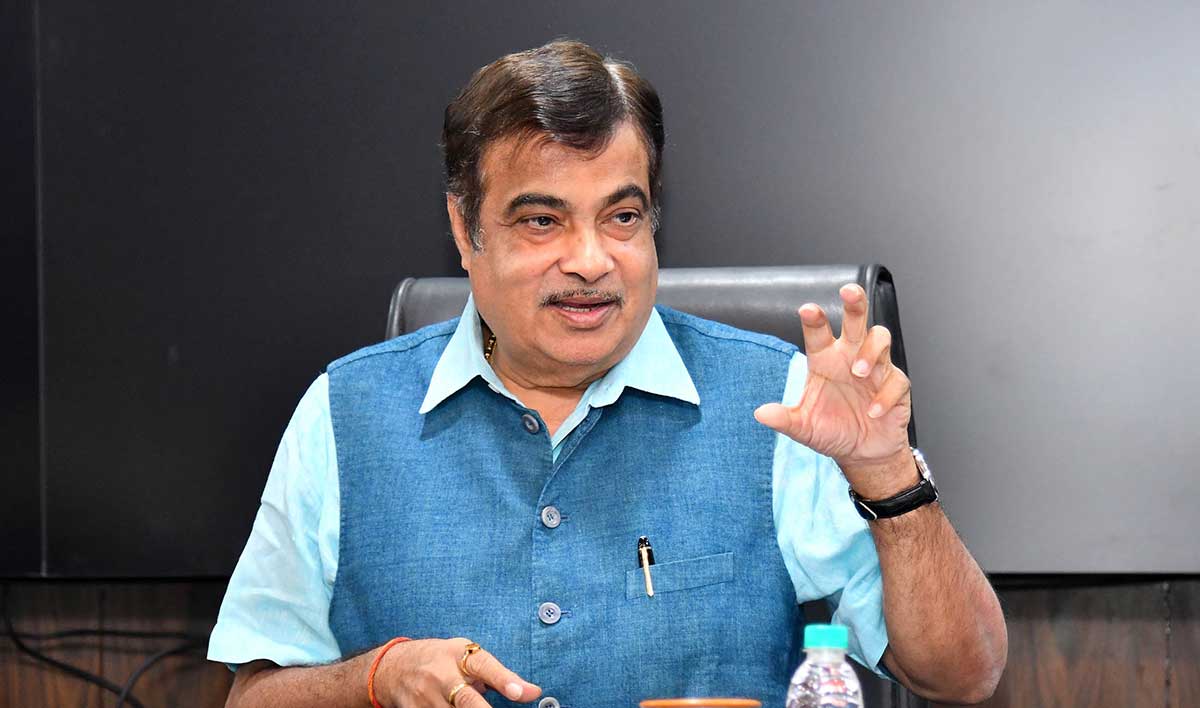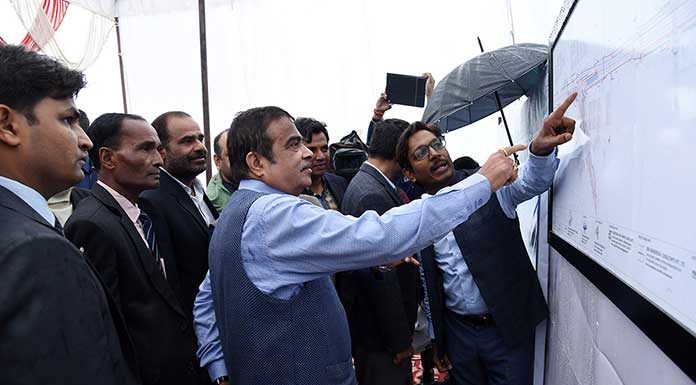Whether you are a public sector or an enterprise, you cannot miss the bus of digital transformation if you want to survive. That has been a lesson most of the government departments in India seem to have imbibed in letter and spirit. Else, who would have thought a decade ago that for a government departments like road transport and highways, technology driven projects will become its differentiator. Despite IT being a very minuscule part of department with limited budget, over the last four years, it has become a most powerful instrument of the ministry.
From projects like Bharat Mala to port connectivity to making the North East more accessible to building thousands of new highways and underpasses across the country, technology has been playing a seminal roll by enabling ministry to monitor, maintain cost and deliver projects on time. Technology is being used to facilitate projects during preparation as well as through its various stages of implementation including monitoring.
This tech-push to Ministry of Road Transport & Highways came in the form of National Highways and Infrastructure Development Corporation (NHIDCL) which was set up way back in 2014-15 to promote, survey, establish, design, build, operate, maintain and upgrade national highways and strategic roads including interconnecting roads in parts of the country which share international boundaries with neighboring countries.
Major works of NHIDCL has been in difficult terrain like North Eastern region and border areas. Perhaps, the challenge of working in difficult situation, also brought the best of the officers at that time. Two key officers who joined NHIDCL as founding member had enough experience in IT. One of them had been IT secretary of Andhra Pradesh and other, had come from Kerala cadre, a state that implemented most of the digital schemes much before other states in the country went for it. With their combined experience along with the leadership of minister for road transport and highways Nitin Gadkari, they bet high on technology to deliver large infrastructure projects.
Subsequently, the NHIDCL set up three key IT projects – INFRACON, INAM-Pro and ePACE. These three projects along with Indian Bridge Management System (IBMS) have delivered significant results and helped department in improving transparency, better monitoring and greater control over projects implementation.
INFRACON
For various project ministry of road transport & highways procures and uses the services of consultancy firms and domain experts. These consultants or domain experts are the people who work on both project preparation and supervision. Success of projects in many ways depend on them, so it was really important that government gets best of the industry to lead its projects. So far these people were selected manually based on traditional structure of hiring that created lot of challenge for the government as number of projects post 2014 had significantly increased. So, INFRACON was created as a web based national portal for consultants and consultancy firms to upload their credentials online and in the manner and form which enables automatic evaluation of their technical proposals.
The portal has the facility to host firms and personnel CVs and credentials online with linkage to Aadhaar and Digi-locker for data validation and purity. The portal also facilitates the public agencies to receive technical proposals through INFRACON. This has been done to significantly reduce the paper work being done during bid submission and also to bring in transparency and accountability in the process.


So far, more than 6000 consultants and over 400 consultancy firms have registered. More than 1000 projects have also been bidded out through this portal and these numbers are growing continuously. In fact, NHIDCL has completed evaluation of many projects through the portal itself and it expects that over a period of time this would become a comprehensive national database for individual's consultants and firms.
This IT initiative in future has the potential to become a common platform for both the service providers and clients. It would also open a window for professionals engaged in the infrastructure domain to showcase their experiences. The project caters to a wide array of organisations and individuals, namely state agencies bidding out consultancy projects, and consultancy firms and individual consultants applying for such projects. At the same time, concessionaires and contractors may also make use of the portal to identify suitable personnel for their projects.
INAM-Pro
Similarly, during the construction of highways, the lack of a common marketplace led to the formation of a segregated network of buyers, while at the other end of the spectrum, the suppliers still remained aggregated. This disparity gave way to cartelisation and inflationary pressures on pricing of cement and steel. To address this challenge, ministry launched INAM-Pro which provides a common platform wherein buyers are aggregated, and volatility in prices is controlled and maintained within an upper ceiling price.
INAM-Pro has been developed as a platform for infrastructure and materials providers. With this platform, the aim is to free the infrastructure sector from external impediments like materials shortages, cost escalations due to material prices some things that have historically plagued the field of infrastructure development. This portal has been envisaged to match the supply and demand in the infrastructure materials industry, by providing a platform for companies to float their demands before it occurs, and for suppliers to adjust production and prices accordingly. It acts as a common marketplace for infrastructure material providers viz. cement companies, infrastructure providers, Ministry of Road Transport and Highways and other stakeholders.
It facilitates contractors or cement buyers engaged in executing the central, state and local bodies funded infrastructure including roads and highways, bridge construction projects to place cement orders online with the registered cement companies that have decided to offer cement at competitive rates in the vicinity of project execution locations. As the cement plants and demand locations are geo-tagged, buyers are able to choose brands offering highest value proposition from the cost or logistics viewpoint.
This is a completely voluntary marketplace and offers its own value proposition and provides free and user friendly access to all those who are willing to join either as buyer or as seller. In future, other products, technologies and services required in highways construction may also become available on the portal.
ePACE
ePACE (Projects Appraisal and Continuing Enhancements) is an online integrated management information system (MIS) designed to monitor and improve the progress of highways development works, at the click of a button. ePACE provides instantaneous access to static and dynamic information for all these projects for ensuring their effective and real time tracking.
The information captured spans the entire lifecycle of these projects and acts as a decision support system for the top management by helping them identify the projects that are lagging behind and also helps them mitigate the factors responsible for such lags. In essence, ePACE captures information from multiple levels and stages of project execution, and then collates it on a desirable single platform, ready for use by the top management for effective project monitoring.
All these three projects are scalable, customisable and easily accessible to the large spectrum of stakeholders. These systems would ensure transparency and provide information on the public domain in a dynamic manner, thus aiding in monitoring and expediting the pace of the projects.
IBMS
IBMS is possibly the largest platform in the world owned by a single owner, with database that could exceed 1,50,000 bridge structures. During inventory creation each bridge is assigned a unique identification number or National Identity Number based on the state, RTO zone and whether it is situated on National Highway, State Highway or is a district road. Then the precise location of the bridge in terms of latitude-longitude is collected through GPS and based on this, the bridge is assigned a Bridge Location Number.
Thereafter, engineering characteristics like the design, materials, type of bridge, its age, loading, traffic lane, length, width of carriage way etc are collected and are used to assign a Bridge Classification Number to the structure. These are then used to do a structural rating of the structure on a scale of 0 to 9, and each bridge is assigned a Structural Rating Number.
The rating is done for each component of the structure like integral and non-integral deck, superstructure, substructure, bank and channel, structural evaluation, deck geometry, vertical clearance, waterway efficiency etc. In addition to the structural rating, the bridges are also being assigned Socio-Economic Bridge Rating Number which will decide the importance of the structure in relation to its contribution to daily socio-economic activity of the area in its vicinity.
Based on this inventory IBMS analyses data and identify bridges that need attention. Also, it can suggest further inspection wherever required to improve the operational availability of the structure, enhance its life and prioritize repair and rehabilitation work. The data helps to decide which bridge needs critical attention, or which needs to be rebuilt.
IBMS is presently covering bridges of the National Highways which is not more than 3% of Indian road network and states are also likely to start implementing it. It is totally digitised system, where in the data collection on field is done on a tablet loaded with software and is transmitted to the server in headquarters which is validated and analysed using the IBMS software, by the team of experienced bridge engineers to generate the reports and updates to the department for necessary action.











